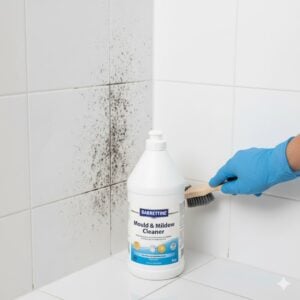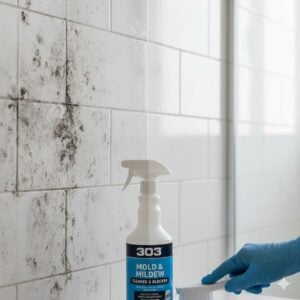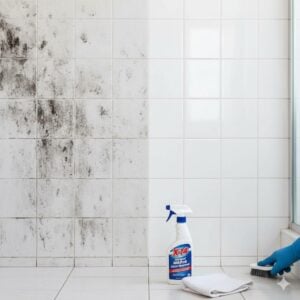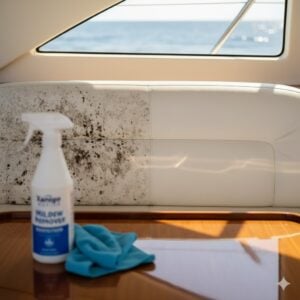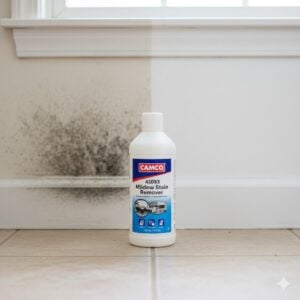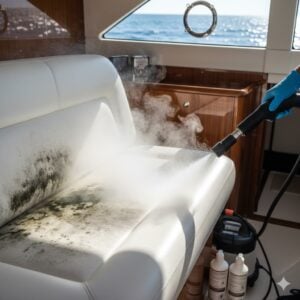When it comes to hiring mold removal specialists, it’s crucial to arm yourself with the right questions. The well-being of your home or business in the UAE depends on the expertise of the professionals you choose. That’s why today, we’re diving into the top 10 essential questions you must ask before making your decision. These questions aren’t just about ensuring quality service; they’re about securing a healthy environment for you and your loved ones. Let’s get started and uncover what makes a mold removal specialist truly stand out.
Table of Contents
Toggle#1. What Certifications Do Your Mold Removal Specialists Hold?
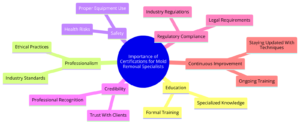
When inquiring about mold removal services, a primary concern should be the certifications held by the specialists you’re considering. Certifications are a testament to a professional’s knowledge, expertise, and commitment to adhering to industry standards. In the realm of mold remediation, several key certifications stand out. Firstly, the Institute of Inspection, Cleaning and Restoration Certification (IICRC) offers comprehensive training and certification in mold remediation. Specialists with this certification have undergone rigorous training in identifying, containing, and safely removing mold, ensuring they are well-equipped to handle various mold situations. Another crucial certification comes from the American Council for Accredited Certification (ACAC). This independent, third-party accreditation body provides certifications that focus on more advanced knowledge of mold assessment and remediation. ACAC certifications are recognized for their scientific basis and high ethical standards, making them highly respected in the industry. Additionally, the National Organization of Remediators and Mold Inspectors (NORMI) offers certifications that focus on both the technical and ethical aspects of mold remediation. Professionals holding a NORMI certification are knowledgeable about the latest mold removal techniques and committed to providing services that meet or exceed industry standards.
Asking about these certifications can provide peace of mind that the specialists you hire are equipped with the necessary knowledge and skills to effectively address your mold concerns. Certifications also indicate that the professionals are committed to ongoing education, staying updated with the latest practices and technologies in mold remediation.
#2. How Do You Assess and Treat Different Types of Mold?
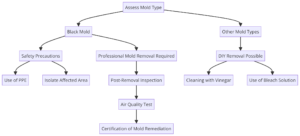
The assessment and treatment of different types of mold require a tailored approach due to the variety of molds that can infest a property and the diverse conditions they thrive in. Initially, a thorough inspection is conducted using tools like moisture meters and thermal imaging cameras to identify the extent of mold growth and the moisture sources that are contributing to it. This step is crucial for determining the right course of action for remediation. Samples of the mold may be taken and sent to a laboratory for analysis to identify the specific types present, which is essential for developing an effective treatment plan.
Treatment varies significantly based on the type of mold and the severity of the infestation. For non-toxic molds, the process may involve cleaning the affected surfaces with specialized agents that kill the mold and prevent its return. However, for toxic molds like Stachybotrys chartarum, also known as black mold, more aggressive measures are necessary. This can include the removal and disposal of heavily infested materials, such as drywall or insulation, to eliminate the health risks associated with exposure. Throughout the treatment process, air filtration devices are often used to remove mold spores from the air, preventing them from spreading to other areas of the property.
The final step involves addressing the underlying moisture issues that led to the mold growth, ensuring that the environment is no longer conducive to mold development. This could mean repairing leaks, improving ventilation, or installing dehumidifiers to maintain low humidity levels.
#3. Can You Provide References or Case Studies?
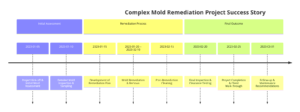
Asking mold removal specialists if they can provide references or case studies is a critical step in evaluating their expertise and reliability. Experienced professionals should be proud to share their success stories and the positive outcomes of their work. References from previous clients can offer insights into the quality of service, effectiveness of mold remediation, and customer satisfaction. These references act as a testament to the company’s ability to handle mold issues similar to yours, demonstrating their problem-solving capabilities and commitment to client well-being.
Case studies, on the other hand, delve deeper into specific mold remediation projects, showcasing before-and-after scenarios, the challenges faced, the strategies implemented, and the results achieved. They provide a detailed view of the specialist’s approach to mold treatment, including how they assess the type of mold, the extent of the infestation, and the effectiveness of the remediation process. Reviewing case studies can also enlighten you about the company’s expertise in dealing with complex situations, their ability to innovate and adapt to unique challenges, and their commitment to restoring safe living or working environments.
Furthermore, a reputable mold removal company will not hesitate to share such information, understanding that transparency builds trust. They should be able to provide contact information for previous clients who are willing to share their experiences, as well as detailed documentation of their case studies.
#4. What Safety Measures Do You Implement During the Remediation Process?
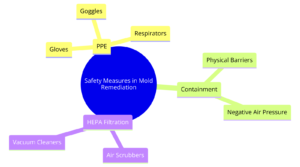
During the mold remediation process, implementing stringent safety measures is paramount to protect both the occupants of the property and the specialists performing the work. Firstly, the use of personal protective equipment (PPE) is mandatory for all personnel involved in the remediation. This typically includes N-95 respirators, gloves, and protective eyewear to prevent inhalation of or contact with hazardous mold spores. For extensive mold infestations, especially those involving toxic mold species, full-body suits may also be required to ensure complete protection.
Containment is another critical safety measure. It involves sealing off the affected area from the rest of the property to prevent the spread of mold spores during the removal process. This is often achieved using plastic sheeting and negative air pressure machines, which ensure that air flows into the containment area but does not escape into clean areas of the building. HEPA (High-Efficiency Particulate Air) filters are employed within air scrubbers and vacuums to capture and remove mold spores from the air, further minimizing the risk of cross-contamination.
Additionally, specialists adhere to strict protocols for the safe handling and disposal of mold-infested materials. Items that cannot be cleaned or salvaged must be carefully bagged and removed from the site in accordance with local regulations regarding hazardous waste. Throughout the process, communication with the property owner is maintained to keep them informed of the progress and any safety considerations they should be aware of.
Ensuring the well-being of everyone involved is the top priority during mold remediation, and these safety measures are designed to address the potential risks effectively.
#5. What Equipment and Techniques Do You Use?
In addressing mold infestations, the equipment and techniques utilized are pivotal to the effectiveness and safety of the remediation process. At the core of our arsenal are HEPA-filtered air scrubbers and vacuums, designed to capture microscopic mold spores from the air and surfaces, ensuring they are not dispersed into the environment. For areas with excessive moisture—often the root cause of mold growth—dehumidifiers are deployed to dry out the air and materials, creating conditions that are inhospitable to mold.
Containment barriers, constructed from heavy-duty plastic sheeting, play a crucial role in isolating the affected area, preventing cross-contamination to other parts of the property during the remediation process. Within this controlled environment, negative air machines are used to generate negative pressure, directing the flow of air into the containment area but not allowing it to escape, thus capturing any airborne spores released during cleaning.
The treatment of surfaces contaminated with mold involves the application of antimicrobial and antifungal agents, specifically chosen for their effectiveness against the mold species identified. These solutions not only eradicate mold on contact but also inhibit future growth. For materials that are too heavily infested to be cleaned, specialized tools, including saws and demolition equipment, may be necessary to remove and safely dispose of the contaminated materials.
Throughout the process, moisture meters and thermal imaging cameras assist in identifying hidden sources of moisture and verifying the completeness of the drying process, ensuring that the environment remains unfavorable for mold recurrence.
#6. How Do You Prevent Mold from Recurring
Preventing mold from recurring involves a multifaceted strategy that addresses the root causes of mold growth: moisture and humidity. First and foremost, identifying and rectifying sources of water intrusion is critical. This could involve repairing leaky roofs, windows, or pipes, and ensuring that gutters and downspouts direct water away from the building foundation. Moisture control is another pillar of mold prevention, which may include the use of dehumidifiers to maintain indoor humidity levels below 60%, promoting a dry environment where mold cannot thrive.
Ventilation plays a key role in preventing mold, particularly in areas prone to dampness such as bathrooms, kitchens, and laundry rooms. Installing exhaust fans that vent to the outdoors can help remove moisture-laden air. For areas with existing ventilation systems, ensuring these systems are clean and properly functioning is essential to prevent mold spores from circulating throughout the property.
Additionally, routine maintenance and inspection of HVAC systems can prevent mold growth by ensuring these systems do not become moisture sources themselves. The use of mold-resistant building materials during repairs or renovations can also provide long-term resistance to mold growth, especially in areas exposed to higher moisture levels.
Finally, educating property owners on the importance of immediate action at the first signs of water damage or mold can prevent minor issues from escalating into major infestations. By implementing these strategies, the likelihood of mold recurrence is significantly reduced, contributing to a healthier and safer indoor environment.
#7. What Are Your Terms of Service and Guarantees?
Our terms of service and guarantees are designed to provide our clients with peace of mind and confidence in the mold remediation services we offer. We start by providing a detailed contract that outlines the scope of work, the timeline for completion, and the costs involved. This transparency ensures that there are no surprises for our clients and that every aspect of the job is clearly understood before any work begins. We guarantee the work performed by our specialists, offering warranties on the services provided. This typically includes a guarantee that if mold returns to the treated areas within a certain period, usually ranging from one to several years, we will perform additional remediation work at no extra cost to the client.
Safety and quality standards are paramount in our service delivery, and we commit to using only the highest quality materials and the most effective, scientifically proven mold remediation techniques. Our team of certified professionals is trained to adhere to the strictest industry standards, ensuring that every job is completed with the utmost professionalism and efficiency.
Additionally, we prioritize customer satisfaction, providing clients with a clear communication channel for any concerns or questions that may arise before, during, or after the remediation process. We are dedicated to addressing and resolving any issues promptly to ensure our clients are completely satisfied with the outcome.
#8. How Do You Handle Mold in Hard-to-Reach Places?
Handling mold in hard-to-reach places requires a combination of specialized equipment, techniques, and expertise. Our approach begins with a thorough assessment using advanced diagnostic tools, such as infrared cameras, which help us detect mold growth in hidden areas without the need for invasive procedures. Once we’ve identified the extent of the mold, we use flexible borescopes to visually inspect and assess the affected areas further, ensuring that no spot is overlooked.
For the actual remediation process, we employ a variety of specialized tools designed for access to tight spaces. These include extendable cleaning tools, miniature HEPA vacuums, and fogging equipment that can deliver antimicrobial agents deep into crevices and behind walls. In instances where mold is found within HVAC systems or ductwork, we use air whips and brushes attached to long hoses to thoroughly clean and remove mold spores from the system.
In cases where materials are too heavily infested to be cleaned and must be removed, we employ precision cutting tools to excise the contaminated sections with minimal disruption to the surrounding areas. Following the removal and cleaning process, we ensure that the area is completely dried and treated with antimicrobial solutions to prevent future growth. Throughout the process, we maintain strict safety protocols to prevent the spread of mold to other areas of the property.
#9.What Is Your Experience with Mold Remediation in the UAE?
Our experience with mold remediation in the UAE spans several years, during which we have addressed mold issues in a variety of settings, including residential homes, commercial buildings, and industrial facilities. The unique climate of the UAE, characterized by high temperatures and humidity levels for much of the year, presents specific challenges for mold prevention and remediation. Our team has developed specialized strategies to effectively combat mold growth in this environment, adapting to the region’s specific needs.
We have successfully completed numerous projects across the UAE, from the humid coastal areas to the dryer interior regions. Our approach combines local knowledge with international best practices in mold remediation. This includes conducting thorough assessments to identify the sources of moisture that contribute to mold growth, using state-of-the-art equipment to remove mold safely and efficiently, and implementing preventive measures to reduce the risk of future mold issues.
Our expertise extends to handling complex cases involving toxic molds, such as Stachybotrys chartarum (black mold), where precision and safety are paramount. We pride ourselves on our ability to restore affected environments to safe, healthy spaces for occupants, all while minimizing disruption and maintaining the highest standards of service.
Through our experience, we have built strong relationships with clients and developed an in-depth understanding of the unique mold remediation needs in the UAE. This experience positions us as leaders in the field, trusted by homeowners, business owners, and property managers across the country.
#10. What Are Your Cleanup and Disposal Procedures Post-Remediation?
Post-remediation cleanup and disposal are critical final steps in the mold remediation process, ensuring the area is safe for reoccupation and preventing any potential for recontamination. Once the remediation work is completed, all surfaces within the containment area are thoroughly cleaned using HEPA vacuums to remove any residual mold spores. This is followed by wiping down all surfaces with damp cloths and a cleaning solution to ensure no spores are left behind. Special attention is given to air ducts and HVAC systems if they were part of the affected area, using air whips and brushes to remove spores from these systems.
Disposal of contaminated materials follows strict guidelines to prevent any risk of spreading mold spores outside the remediation area. Materials that cannot be cleaned or are heavily infested, such as sections of drywall, insulation, or carpeting, are bagged in heavy-duty plastic bags within the containment area. These bags are then sealed and marked as hazardous material before being carefully transported out of the building for proper disposal, according to local environmental and health regulations.
Finally, a detailed post-remediation report is prepared, documenting the work done, the materials removed, and the cleaning methods used. This report also includes recommendations for preventing future mold growth, such as maintaining proper humidity levels and fixing any water leaks promptly.
Why Bio On is Your Go-To Solution for Mold Concerns
Bio-On stands out as your definitive solution for mold issues due to our unparalleled expertise, cutting-edge technology, and commitment to customer satisfaction. With years of specialized experience in the UAE’s unique climate, our certified professionals employ the latest in mold remediation techniques and equipment to ensure effective and lasting results. We prioritize safety and efficiency, tailoring our approach to each specific case, from initial assessment to final cleanup. Our comprehensive services not only address the immediate mold concern but also implement preventive measures to safeguard against future occurrences. Bio-On’s dedication to excellence and transparency in service delivery, combined with our 24/7 customer support, makes us the trusted partner for all your mold remediation needs.
Conclusion
Choosing the right mold removal specialists is pivotal to ensuring a healthy and safe environment. By asking the right questions, you can ascertain the qualifications, experience, and methods of the professionals you entrust with this critical task. Ensure they have the appropriate certifications, understand how they assess and treat different molds, and know their safety measures and post-remediation processes. Bio-On exemplifies the standard of care and expertise needed, with our comprehensive approach to mold remediation. For personalized advice and a free consultation on how to address your mold concerns, don’t hesitate to contact our team through the WhatsApp button. Let us help you create a safer, mold-free environment.







